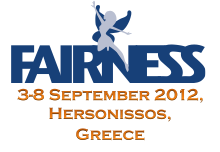Sprecher
Herr
Manuel Lorenz
(University Frankfurt)
Beschreibung
The HADES experiment, installed at the Helmholtzzentrum für Schwerionenforschung (GSI) accelerator facility in Darmstadt,
investigates dielectron emission and strangeness production in various collision systems (p+p, p+n, p+A and A+A) in the 1-3.5 AGeV regime.
The observed low-mass dielectron and cascade enhancement in intermediate heavy-ion collisions indicates the onset of medium effects, on the one hand, and underlines the importance of a solid knowledge of contributions of baryon resonances on the other hand.
The latter turned out to be of eminent importance for the interpretation of the spectral shape of the rho meson already in elementary data and moreover for the extraction of additional medium effects in p+A and A+A collisions. Such a knowledge is gained by the analysis of exclusive hadronic channels in elementary reactions.
In this contribution, we summarize the findings of HADES and implications, with a special emphasis on the baryon resonance contributions and comparison of particle yields to a statistical hadronization model.
Autor
Herr
Manuel Lorenz
(University Frankfurt)

